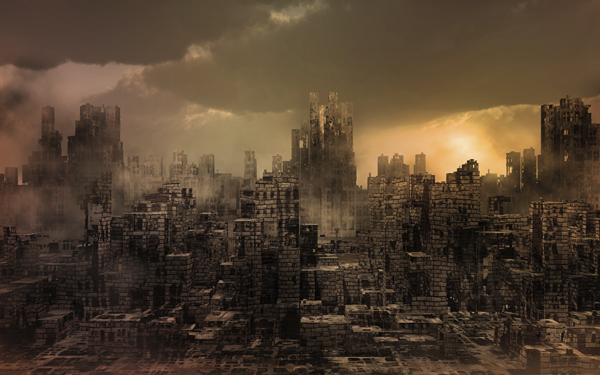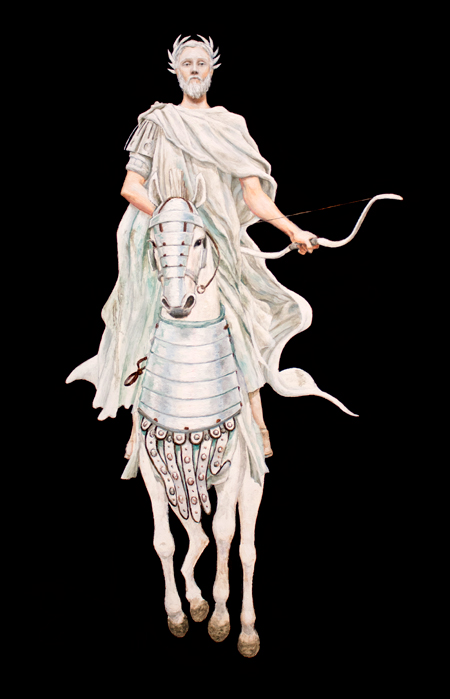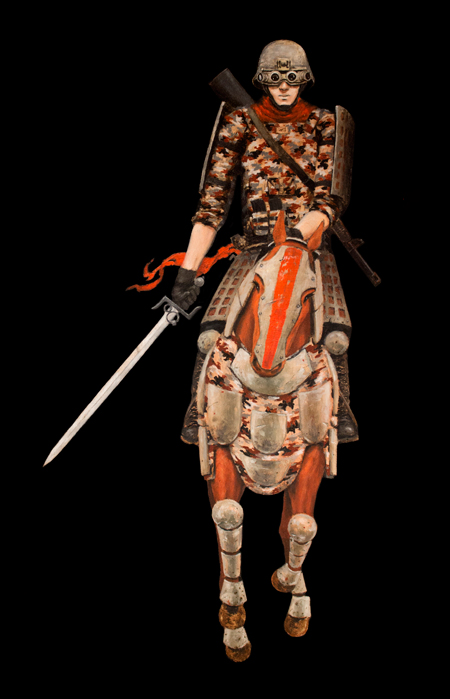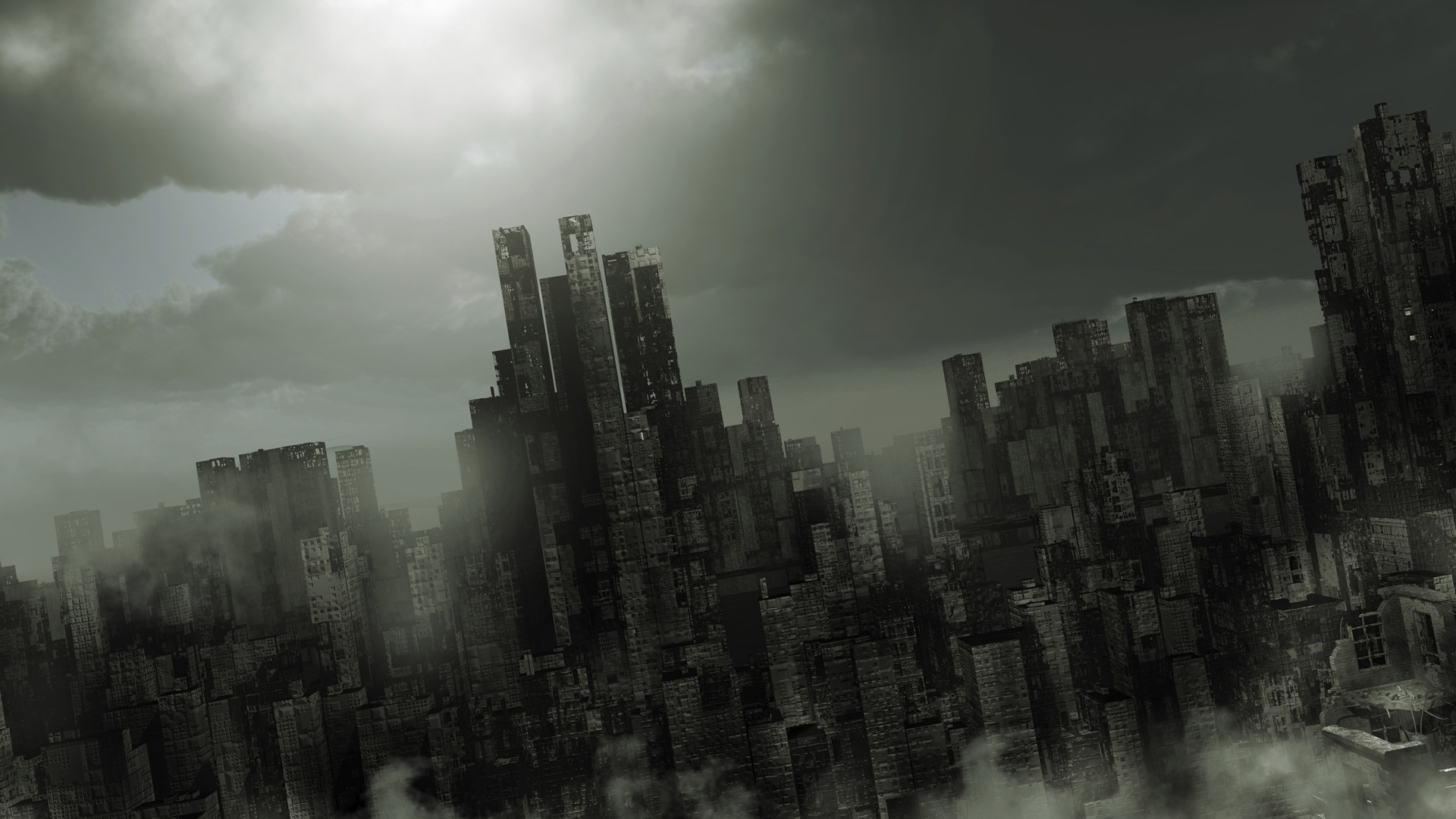Misunderstood Messengers
The mysterious riders of the four horses so colorfully described in Revelation 6 have excited curiosity for nearly 2,000 years. Can anyone know for certain what they symbolize? In Part One of this two-part series, we examine the Bible’s own interpretation of the first two riders.
One of the Bible’s most enduring images is of four horsemen bringing trial and tribulation on the earth. Riding different-colored horses—white, red, black and greyish-green—these harbingers of death and destruction have haunted the human imagination since they appeared in the late-first-century book of Revelation, also known as the Apocalypse.
The meaning of the title apokalupsis in the original Greek is “the unveiling” of what has been hidden. The book’s subject matter is “things which must shortly [swiftly] take place” (Revelation 1:1). It’s a revealing of the end-time future of humanity, both the bad and the eventual good outcome. However, the book is filled with many mysterious images and symbols beyond the four riders and has therefore been the subject of much misinterpretation. Understanding its meaning requires a reliable interpreter. But purely human explanations have proven inadequate and have not led to clarity. This is especially true of the four horsemen. There is really only one accurate interpreter, as we’ll see.

The Apocalypse begins: “The Revelation of Jesus Christ, which God gave Him. . . .” Immediately we know the origin of all that follows. It comes from God the Father through Jesus Christ. It is then conveyed in a series of visions to a man named John, believed by many to be the last surviving of Jesus’ apostles, who writes down what he sees.
In chapter 5, Jesus Christ is given a scroll from the hand of God. Only He can break open the seven closures or seals on the scroll (verses 5, 9–10). John is allowed to see the result as each seal is removed, and the first four broken seals reveal the four horsemen. But what do they symbolize? What is surprising is that Jesus gave the key to the vision well in advance—more than 60 years earlier—to a small group of His disciples (see Matthew 24:3; Mark 13:3–4).
At the time, Jesus was about to be crucified by the Romans in Jerusalem. He had just lamented the fact that once more the city had rejected a servant sent from God and would soon suffer destruction. His disciples heard Him say that the magnificent Temple Mount, with its house of God and other Herodian structures, would be reduced to rubble.
“Assuredly, I say to you, not one stone shall be left here upon another, that shall not be thrown down.”
This was a shocking statement, almost beyond belief. For Jesus’ companions such an event could only have meant the end of the world, so architecturally stunning was the site and so overwhelming the thought of its complete destruction. For this reason they said, “Tell us, when will these things be? And what will be the sign of Your coming, and of the end of the age?” (Matthew 24:3). Jesus’ reply is the interpretive key to the symbolism of the Four Horsemen of the Apocalypse. By aligning Revelation 6 with the corresponding sections of Matthew 24, Mark 13 and Luke 21, we can discern a meaningful pattern.
Conquering Hero?
When the first seal is broken, a white horse appears, ridden by a conqueror of sorts: “And I looked, and behold, a white horse. He who sat on it had a bow; and a crown was given to him, and he went out conquering and to conquer” (Revelation 6:2). This first rider carries a bow and wears a crown (in Greek, stephanos, “laurel wreath”—the ancient symbol of a victor). In a classic case of misinterpretation, this horseman is often equated with the returning Christ described in chapter 19 of the same book, because He also rides a white horse. Accordingly, many believe that the first rider pictures the gradual triumph of organized Christian religion beginning 2,000 years ago and culminating in Christ’s return.

Artwork by Randall Fischer
But Revelation 19 reveals a quite different individual than chapter 6. There the returning Christ is dressed in a robe stained with blood, wearing many crowns (in Greek, diadema: “royal headbands” or “diadems”), not a single laurel wreath. Further, He is accompanied by many angelic beings on white horses, and His weapon is not a bow but the sword of His mouth.
The obvious differences between the two images suggest that the first of the Four Horsemen represents a counterfeit or false messiah. And this is exactly what we find in the explanation that Jesus Himself gave in the Gospel accounts to some of His disciples on the Mount of Olives. Warning them not to think that the end is imminent when certain events happen, He said, “Many will come in My name, saying, ‘I am the Christ,’ and will deceive many.” Claiming the identity of the true Messiah, they deceive by promising to do what only He can do in resolving all human problems.
But do such false messiahs literally have to say, “I am Jesus”? Do they have to have a primarily religious message? In Mark’s parallel Gospel account, the same deceivers claim, “I am He” (Mark 13:6). Another way of saying it might be, “I’m the chosen one.” Such people present themselves as the only ones with the answers. And clearly, it can only be that considerable time passes while the many deceivers rise and fall. The coming of someone claiming to be a messiah is not the sign that informs disciples of Christ’s return. A false messiah is one who counterfeits the future role of the true returning Christ, who will in reality bring an end to all of humanity’s ills.
But of course, a counterfeit is not easy to spot. It’s so close that it could be the real thing except to the trained eye. So Jesus warned against being deceived by human beings who claim to be specially chosen by God to lead.
More often than not a false messiah will combine aspects of religion and politics in an effort to become the anointed one. Take the fourth-century Roman emperor Constantine, the man credited with Christianizing the Roman Empire. Though he was baptized only shortly before his death in 337, he claimed to have had a special revelation of Christ 25 years earlier. Along with his 98,000-man army, in 312 he is said to have seen “a cross-shaped trophy formed from light, and a text attached to it which said, ‘By this conquer’” (Eusebius, Life of Constantine 1.28). Many years later, the emperor told the historian and bishop Eusebius that the next night Christ appeared to him and ordered him to put the sign of the cross on his battle standards. It would be claimed that this led to the victory that eventually made him the sole emperor.
“Since the victorious Emperor himself told the story to the present writer a long while after, . . . and confirmed it with oaths, who could hesitate to believe the account . . . ?”
On the surface Constantine may well appear to be the fulfillment of the white horseman as victorious Christianity, but in fact he was the dubious champion of a counterfeit religion and he himself a false messiah. It was apparently to his political advantage to promote the faith. According to Robert M. Grant, “by 312 he had realized how helpful the Christian church could be, and with the aid of a secretary for church affairs he began to intervene in such matters so that he could promote the unity of the church.”
This brought about his role in the famous Council of Nicea, set up to resolve theological divisions in the Roman Catholic Church. Yet despite his apparent support of the religion, within a short time he was involved in the executions of his wife, Fausta; his son Crispus; and his nephew Licinianus. This is hardly the behavior of a follower of Christ. He already viewed himself as Christ’s agent on the earth, but toward the end of his life religious megalomania seems to have overtaken him as he named himself “Equal of the Apostles.” As John Julius Norwich imagines of Constantine at the end of his life, “from being God’s chosen instrument it was but a short step to being God himself, that summus deus in whom all other Gods and other religions were subsumed.”
Other more recent examples of the false messiah include Napoleon, Stalin and Hitler. All of them took advantage of the language of religion and its imagery, stirring up religious fervor, and got their followers to virtually worship them because they seemed to have all the answers. Of course, they failed precisely because they were false. They also brought great destruction on the world, including on their own people. Millions died because of their violent regimes, their purges and their wars.
And that’s what comes next in the sequence of the four riders.
The Specter of War
According to Jesus, war would be the second condition to plague the earth. He warned, “Take heed that no one deceives you,” and then added, “You will hear of wars and rumors of wars. See that you are not troubled; for all these things must come to pass, but the end is not yet. For nation will rise against nation, and kingdom against kingdom” (Matthew 24:4, 6–7a). This explains the symbolism of the second horse and its rider. “When He opened the second seal, . . . another horse, fiery red, went out. And it was granted to the one who sat on it to take peace from the earth, and that people should kill one another; and there was given to him a great sword” (Revelation 6:3–4).
But once again Jesus stressed that conflict and war do not necessarily signal the end of this era. War has characterized humanity since the beginning of civilization. Jesus said that it would continue to be so until the end. It frequently follows in the wake of the false messiah because it is a natural consequence of false claims, wrong ideas, misguided policies and ruinous ideologies. War is also the result of blind obedience to leaders filled with egocentric ambitions.

Artwork by Randall Fischer
Napoleon Bonaparte was primarily a warrior. While an obvious example and incarnation of the first rider—often depicted riding a white horse, wearing a laurel wreath, or robed as a Roman emperor—his leadership also brought the red horse at full gallop onto the world scene. Between 1792 and 1815 Napoleon’s France was at war with four other colonial powers: the Spanish, the Dutch, the Portuguese and the British. His aggression took his forces around the globe. Like so many before him, Napoleon positioned himself as a savior, but it’s estimated that between 3 and 6.5 million people died in his wars.
Joseph Stalin’s 20th-century record was certainly worse. Violence and war, domestic and international, characterized his Soviet regime. A former seminary student, his cynical manipulation of religious sentiment underscored the duplicity of what in pure numbers was arguably one of the most murderous governments in human history.
We could talk in detail about the warfare and violence of other false messiahs of the 20th and 21st centuries, including Mussolini and Mao, Cambodia’s Pol Pot and the Kim dynasty of North Korea. The story would be the same: totalitarian cruelty, wrongful imprisonment, and the brutal death of millions. The red horseman often rides in the wake of the false messiah; false christs bring on total war.
By explaining these two conditions, Jesus was also inviting His disciples—and us—to recognize that human beings have certain tendencies. Like sheep, they follow false messiahs down the path of deception, and they are inclined to accept the inevitability of war.
Human nature is also implicated in the red horseman’s ride. Military historian Victor Davis Hanson notes, “Conflict will remain the familiar father of us all—as long as human nature stays constant and unchanging over time and across space and cultures.”
“War is an entirely human enterprise.”
Another man who knew the harsh reality of war and pointed up its ultimate futility was US president Dwight D. Eisenhower. He said: “Every gun that is made, every warship launched, every rocket fired signifies, in the final sense, a theft from those who hunger and are not fed, those who are cold and are not clothed. This world in arms is not spending money alone. It is spending the sweat of its laborers, the genius of its scientists, the hopes of its children. . . . This is not a way of life at all, in any true sense. Under the cloud of threatening war, it is humanity hanging from a cross of iron.”
The two remaining horsemen, black and pale, are also riding across the earth. What they signify and portend for our times is the subject of the next installment in this two-part series.
READ NEXT
(PART 2)

